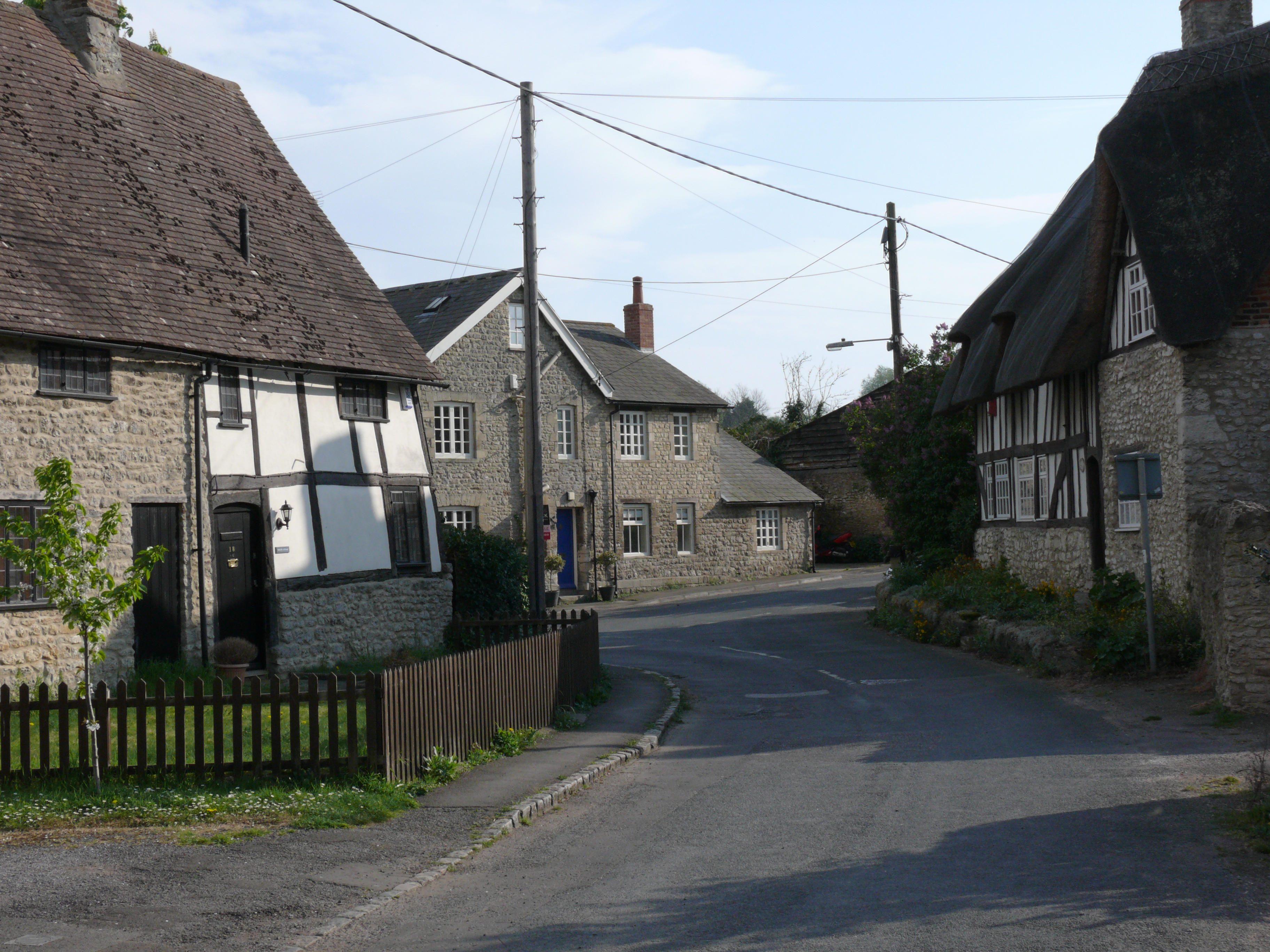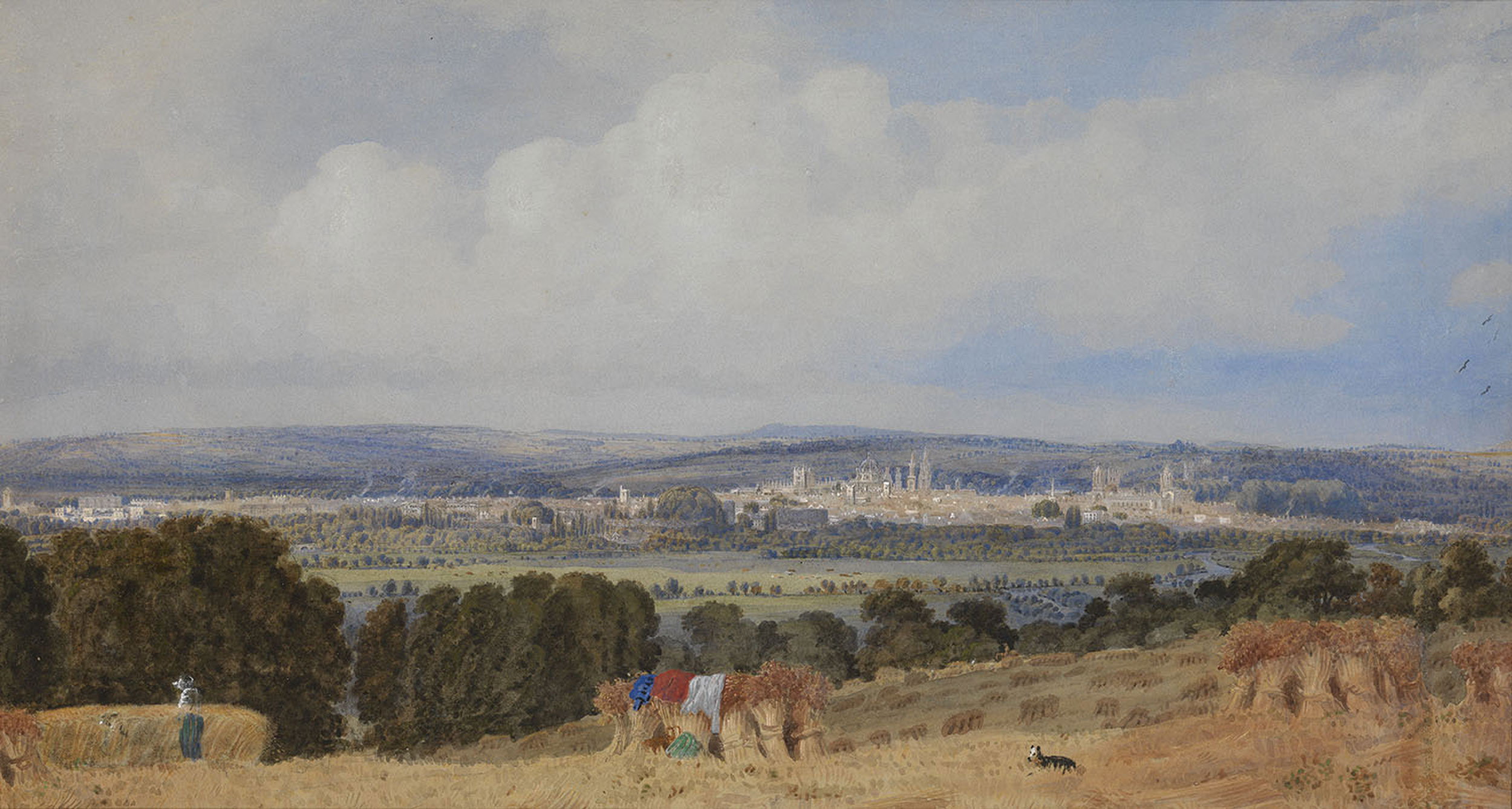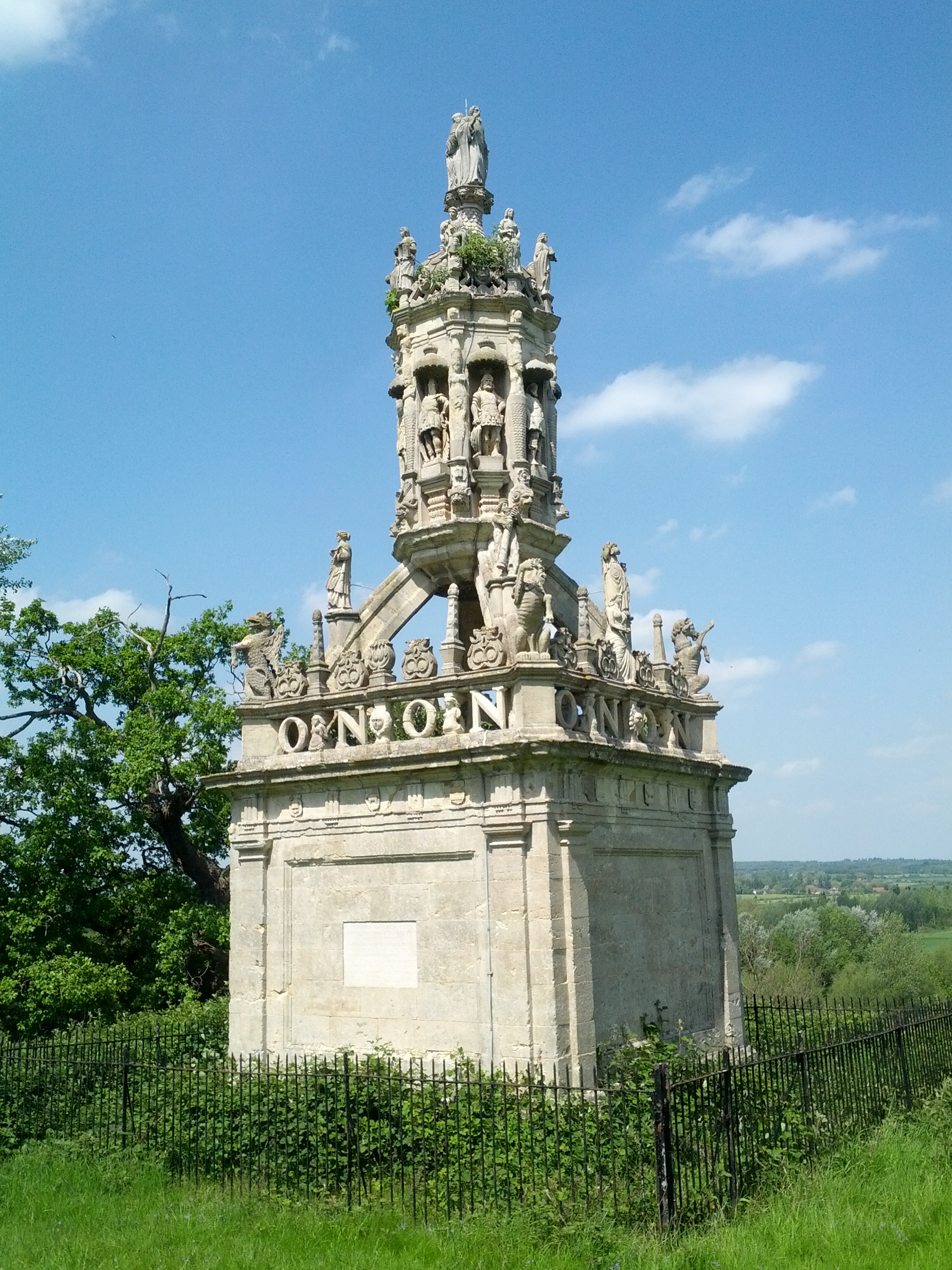|
Hinksey
Hinksey is a place name associated with Oxford and Oxfordshire. In 1974, many of the places associated with the name were transferred from the county of Berkshire in the county boundary changes. History The place-name is of Old English origin. It is first mentioned in the 10th century in the form Hengestesige, and probably means "stallion island". It may also mean "island of a man named Hengest", but there is no evidence to link the place to the historical Hengest. Place names ending in “-ey” (“island”, commonly used of higher ground in a marshy area) are of early formation, probably names bestowed by the first English farmers who tackled the area. The Hinksey villages were not mentioned as separate villages until 1316. Hinxey Hall was located in Oxford during the 14th to 16th centuries. The Carfax Conduit from Hinksey Hill to Carfax in the centre of Oxford was completed in 1617. Hinksey Halt railway station served New Hinksey in south Oxford during 1908−15. In 1934 ... [...More Info...] [...Related Items...] OR: [Wikipedia] [Google] [Baidu] |
North Hinksey
North Hinksey is a village and civil parish in Oxfordshire, England, immediately west of Oxford. The civil parish includes the large settlement of Botley, effectively a suburb of Oxford. North Hinksey was part of Berkshire until the 1974 boundary changes transferred it to Oxfordshire. The village of North Hinksey has a manor house, The Fishes public house, a Church of England primary school and a Church of England parish church, St. Lawrence's, which dates back to at least the 12th century. Four of the older houses have thatched roofs. There was also the administrative offices of the Church of England Diocese of Oxford (Diocesan Church House) in the enlarged former vicarage. This, as of September 2016 is to be converted to housing. Harcourt Hill and Raleigh Park lie to the southwest of the village. All the shopping and other facilities in the parish are now found in Botley. The centre of the old village is now effectively cut off from much of the newer part of Botley ... [...More Info...] [...Related Items...] OR: [Wikipedia] [Google] [Baidu] |
Ferry Hinksey Road
Ferry Hinksey Road is a road in west Oxford, England, leading south from the Botley Road. The road leads to the Osney Mead Industrial Estate to the east, started in 1961. To the east is Osney Ditch. History The road is named after the village of Ferry Hinksey, now known as North Hinksey, on the other side of Hinksey Stream, one of the branches of the River Thames in Oxford. There was once a punt ferry that operated over Bulstake Stream. The most notable path between Oxford and North Hinksey, a continuation of Ferry Hinksey Road, is a metalled bridleway and cycle track, variously known as Willow Walk and Ruskin's Ride. The latter is named after John Ruskin (1819–1900) who used to pass this way between Ferry Hinksey and Oxford, where he was the first Slade Professor of Fine Art from 1869. The path was originally built in 1876–77 by Aubrey Harcourt (1852–1904), a major local landowner, but was not made open to the public until 1922. There is also a smaller unmade p ... [...More Info...] [...Related Items...] OR: [Wikipedia] [Google] [Baidu] |
Hinksey Stream
Hinksey Stream is a branch of the River Thames to the west of the city of Oxford, England. It starts as Seacourt Stream (also known as Wytham Stream), which leaves the Thames at a bifurcation north of the village of Wytham, and rejoins the river south of the city near Kennington. Course Seacourt Stream From the bifurcation Seacourt Stream flows south past Wytham and under the A34 Oxford Ring Road. Near the site of the lost village of Seacourt Botley Stream branches off Seacourt Stream on its left bank, and flows 0.8 km to enter Bulstake Stream.Oxford Area Flood Information Guidance Booklet , pages 37–38. Seacourt Stream then flows under Botley Road and enters Bulstake ... [...More Info...] [...Related Items...] OR: [Wikipedia] [Google] [Baidu] |
South Hinksey
South Hinksey is a village and civil parish just over south of the centre of Oxford. The parish includes the residential area of Hinksey Hill about south of the village. The parish was part of Berkshire until the 1974 boundary changes transferred it to Oxfordshire. Geography The Southern By-Pass Road (part of the A34) passes through the parish. The only road access to the village is ''via'' the bypass. It is on the inside of the ring road and close to the Hinksey Stream, a branch of the River Thames at Oxford. Pedestrian and cycle access to the village from Oxford is ''via'' the Devil's Backbone; a historic raised pathway across the neighbouring flood plains that features in Matthew Arnold's poem ''The Scholar Gipsy''. History It has always been difficult to get between North Hinksey to the north-west and South Hinksey. In the 19th century John Ruskin tried to organize the making of a road between the two villages, as the ground between them was very boggy. Since the 1930 ... [...More Info...] [...Related Items...] OR: [Wikipedia] [Google] [Baidu] |
New Hinksey
New Hinksey is a suburb in the south of the city of Oxford. Geography The suburb is west of the Abingdon Road ( A4144). To the north is Grandpont and to the east, over Donnington Bridge, which crosses the River Thames, is Cowley. To the west is the railway line between and and beyond that Hinksey Stream, a branch of the River Thames. Amenities The original Church of England parish church of Saint John the Evangelist was designed by the Gothic Revival architect EG Bruton and built in 1870.Sherwood & Pevsner, 1974, page 335 In 1900 it was demolished and replaced by one designed by the Scots architects William Bucknall and Ninian Comper. New Hinksey Church of England Primary School is on Vicarage Road, beside St. John the Evangelist church. There is a large outdoor public swimming pool in Hinksey Park between New Hinksey and Grandpont. History The suburb of New Hinksey was developed in the 19th century. Until then the area was covered by water meadows. New Hinksey was in ... [...More Info...] [...Related Items...] OR: [Wikipedia] [Google] [Baidu] |
Hinksey Hill
Hinksey Hill is a hill and residential area south of the centre of Oxford. It is in South Hinksey civil parish, about south of the village. Hinksey Hill was part of Berkshire until the 1974 boundary changes transferred it to Oxfordshire Oxfordshire is a ceremonial and non-metropolitan county in the north west of South East England. It is a mainly rural county, with its largest settlement being the city of Oxford. The county is a centre of research and development, primarily .... At the foot of the hill is Hinksey Hill Interchange where the Abingdon By-Pass joins the Southern By-Pass Road. The road up the hill was the route of the A34 until the 1970s, when the Abingdon Bypass was completed. It is now an unclassified road. At the summit of Hinksey Hill is the Old Berkeley Golf Course which was the former private golf course of Lord Berkeley of Berkeley Castle on Boars Hill. The land is now preserved as a nature reserve and it a great spot for dog walking and o ... [...More Info...] [...Related Items...] OR: [Wikipedia] [Google] [Baidu] |
Hinksey Hill Farm
Hinksey Hill is a hill and residential area south of the centre of Oxford. It is in South Hinksey civil parish, about south of the village. Hinksey Hill was part of Berkshire until the 1974 boundary changes transferred it to Oxfordshire. At the foot of the hill is Hinksey Hill Interchange where the Abingdon By-Pass joins the Southern By-Pass Road. The road up the hill was the route of the A34 until the 1970s, when the Abingdon Bypass was completed. It is now an unclassified road. At the summit of Hinksey Hill is the Old Berkeley Golf Course which was the former private golf course of Lord Berkeley of Berkeley Castle on Boars Hill. The land is now preserved as a nature reserve and it a great spot for dog walking and observing the great views of the city of Oxford painted many times by William Turner. Much of the land on Hinksey Hill was owned by the Earls of Abingdon until it was sold by the 7th Earl in Acre sized plots throughout the 1910s Home to the Priors a loca ... [...More Info...] [...Related Items...] OR: [Wikipedia] [Google] [Baidu] |
Hinksey Halt Railway Station
Hinksey Halt railway station was built by the Great Western Railway to serve New Hinksey, a suburb of Oxford. History The station was situated on the main Didcot to railway line, to the north of the site of Millstream Junction, the junction for the original terminus at Oxford (Grandpont), which was later a goods station but had closed by 1900. Access to Hinksey Halt was via Norreys Avenue and a footpath across the adjacent reservoir. The reservoir was formerly a ballast pit, dug by the GWR between 1844 and 1848. It was opened on 1 February 1908 along with four other halts on the route between Oxford and . Services were provided by steam railmotor Railmotor is a term used in the United Kingdom and elsewhere for a railway lightweight railcar, usually consisting of a railway carriage with a steam traction unit, or a diesel or petrol engine, integrated into it. Steam railcars Overview In th ...s based at Oxford, which was also the western terminus; the eastern terminus of th ... [...More Info...] [...Related Items...] OR: [Wikipedia] [Google] [Baidu] |
John Ruskin
John Ruskin (8 February 1819 20 January 1900) was an English writer, philosopher, art critic and polymath of the Victorian era. He wrote on subjects as varied as geology, architecture, myth, ornithology, literature, education, botany and political economy. Ruskin's writing styles and literary forms were equally varied. He wrote essays and treatises, poetry and lectures, travel guides and manuals, letters and even a fairy tale. He also made detailed sketches and paintings of rocks, plants, birds, landscapes, architectural structures and ornamentation. The elaborate style that characterised his earliest writing on art gave way in time to plainer language designed to communicate his ideas more effectively. In all of his writing, he emphasised the connections between nature, art and society. Ruskin was hugely influential in the latter half of the 19th century and up to the First World War. After a period of relative decline, his reputation has steadily improved since the 196 ... [...More Info...] [...Related Items...] OR: [Wikipedia] [Google] [Baidu] |
List Of Berkshire Boundary Changes
Boundary changes affecting the English county of Berkshire. List of places transferred from Berkshire to Oxfordshire in 1974 * Abingdon * Appleford-on-Thames *Appleton *Ardington *Ardington Wick * Ashbury *Aston Tirrold *Aston Upthorpe *Bablock Hythe *Badbury Hill *Bagley Wood * Baulking *Bayworth *Belmont * Besselsleigh *Blewbury *Boars Hill * Botley *Bourton, Vale of White Horse * Bow * Brightwell-cum-Sotwell * Buckland * Caldecott *Chain Hill * Charney Bassett * Childrey *Chilswell * Chilton *Cholsey * Compton Beauchamp *Coscote * Cothill *Cumnor * Cumnor Hill *Cumnor Hurst *Dean Court *Denchworth *Didcot * Dragon Hill, Uffington * Drayton, Vale of White Horse * Dry Sandford * Duxford *East Hagbourne *East Hanney *East Hendred * East Lockinge *Eaton * Eaton Hastings *Faringdon * Farmoor * Fernham *Frilford *Fulscot * Fyfield, Oxfordshire * Gainfield *Garford * Great Coxwell *Grove * Harcourt Hill * Harwell * Hatford *Hinksey *Hinksey Hill *Hinton Waldrist *Kennington * King ... [...More Info...] [...Related Items...] OR: [Wikipedia] [Google] [Baidu] |
William Turner (artist)
William Turner (29 November 1789 – 7 August 1862) was an English painter who specialised in watercolour landscapes. He is often known as William Turner of Oxford or just Turner of Oxford to distinguish him from his contemporary, J. M. W. Turner (known as William). Many of Turner's paintings depicted the countryside around Oxford. One of his best known pictures is a view of the city of Oxford from Hinksey Hill. In 1898, the Ashmolean Museum in Oxford held a retrospective exhibition of his work. Some of his paintings are still on permanent display at the museum. In 1984, the Oxfordshire County Council presented his work in an exhibition at the Oxfordshire County Museum in Woodstock. His paintings are also held in national and international collections, for example at the Tate Gallery (London, UK), the Metropolitan Museum of Art (New York City, US) and the Dunedin Public Art Gallery (New Zealand). Life Turner was born at Black Bourton, Oxfordshire. He was the eldest of three c ... [...More Info...] [...Related Items...] OR: [Wikipedia] [Google] [Baidu] |
Carfax Conduit
The Carfax Conduit was a water conduit that supplied the city of Oxford with water from 1610 until 1869. The conduit ran in an underground lead pipe from a spring on the hillside above the village of North Hinksey, beneath Seacourt Stream and the River Thames, to a building at Carfax in the centre of Oxford. The system was built by Otho Nicholson, a London lawyer, to supply the citizens of Oxford with clean water. It replaced a system built by Osney Abbey between 1205 and 1221 that had fallen into disrepair. The conduit building at Carfax was an elaborate structure, some tall, with eight niches containing statues of historic and mythical figures. By 1787 it had become an obstacle to traffic and it was removed in 1797 and replaced by a smaller cistern. The original structure was given to the Earl Harcourt, who had it re-erected in the grounds of his home, Nuneham House, where it remains to this day. Two plaques are attached to opposite sides of the building, giving a short hi ... [...More Info...] [...Related Items...] OR: [Wikipedia] [Google] [Baidu] |







